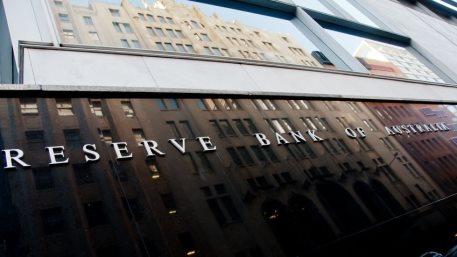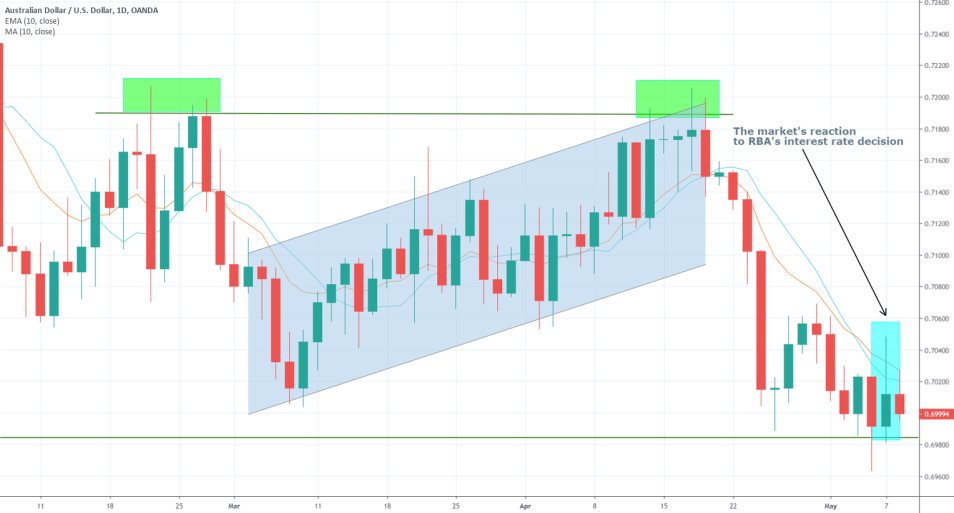
Despite the overall market’s expectation that the Reserve Bank of Australia was given all of the necessary incentives to reduce the main interest rate, the central bank eventually opted against this course of action and maintained the rate as it was previously at 1.50%
The consensus for an expected decrease in the rate was discerned from the somewhat underperforming labour market and the disappointing inflation data that was released before Tuesday’s decision. RBA’s decision was prompted by their desire to remain cautious and to avoid any rash decisions. Overall, Australia’s central bank decided after re-evaluating the actual threat of the disappointing inflation statistics and the stability of the labour market.
As regards the latter, the RBA recognizes the slow progress that has been made in the past six months for the reduction of the overall unemployment level; however, the promising outlook for future growth reassured them that the local labour market remains resilient.
“There has been a significant increase in employment, the vacancy rate remains high and there are reports of skills shortages in some areas. […] The strong employment growth over the past year or so has led to some pick-up in wages growth”.
Hence, the general expectation is for the Australian labour market to catch-up to the increased demand for high-skilled jobs by the end of the year, and thereby lead to a reduction in unemployment. For that reason, the central bank is currently reluctant to implement any transformational changes in its monetary policy to avoid potentially hindering this process of catching up. Finally, the outlined growth in wages is also expected to show more prominence in the near future, as the RBA expects an increase in overall consumer spending.
As regards the former, the RBA remains upbeat about the prospects for future growth in inflation, despite the recent disconcerting performance (more on which you can read here).
“Looking forward, inflation is expected to pick up, but to do so only gradually. […] In headline terms, inflation is expected to be around 2 per cent this year, boosted by the recent increase in petrol prices” [source]
Hence, from the statement, it becomes apparent that the RBA is viewing the recent drop in the CPI as a sort of a short-term shock, rather than the beginning of a new trend. For that reason, the RBA remains hesitant to bring about any actual changes to its interest rate policy, which might ultimately end up offsetting the current expectations for a future rise in the inflation rate.
The RBA attributes the underperforming headline inflation to the price setting of the petrol, however, in case that the oil market starts to suffer more and the prices fall short of expectations, then the RBA might be more inclined to consider a change in the interest rate.
The AUDUSD initially found strong support by the somewhat surprising decision by the RBA to abstain from decreasing the interest rate, and hence the currency pair appreciated to 0.70483 from the opening price of 0.69915, but then the price quickly corrected itself and eventually retracted to 0.70118, which was the closing price for the trading day. Ultimately, the previously outlined support level at 0.69841 remains strong, and the AUD/USD consolidated itself above it and below the 10-day EMA.





















